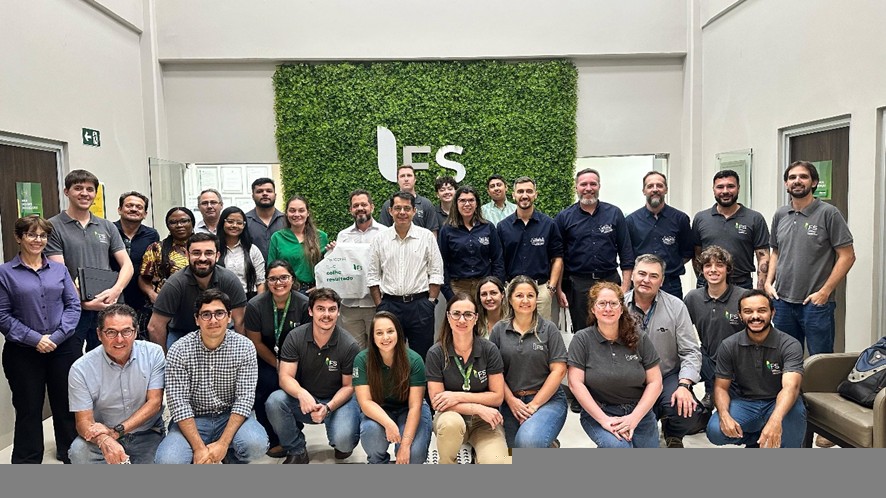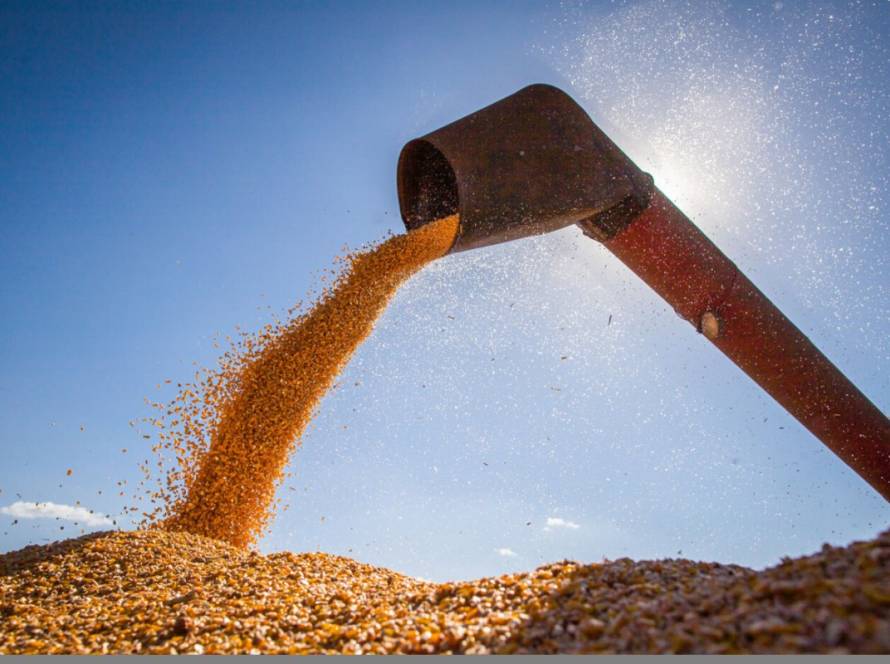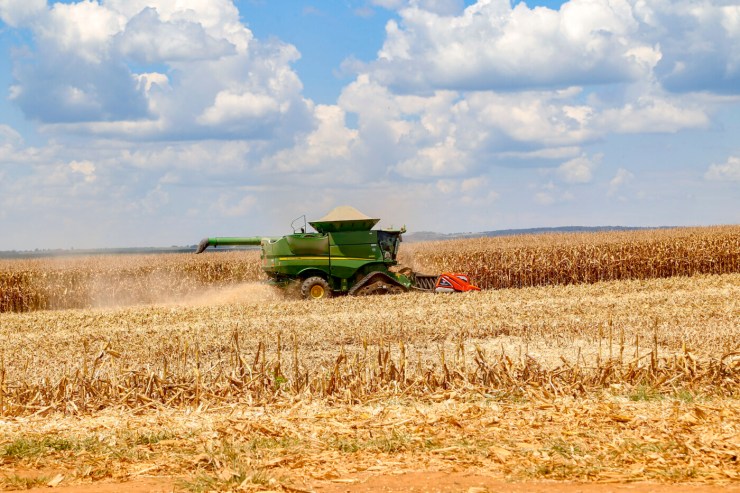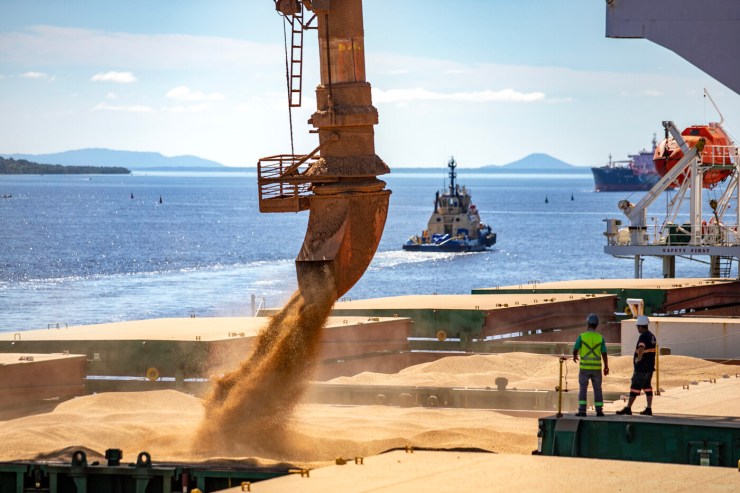Laser-induced plasma spectroscopy (LIBS) combined with machine learning algorithms could be an alternative screening technique to identify and discriminate GM corn grains from conventional varieties. The methodology, developed by researchers from Embrapa, four universities from three regions of the country and an Italian institute, has proven capable of making the distinction in an accurate, fast and accessible way.
Currently, the detection and quantification of genetically modified foods and feeds is performed by the standard Polymerase Chain Reaction (PCR)-based test, which detects and quantifies the presence of specific DNA proteins in the sample. Despite its good accuracy and sensitivity, this method is time-consuming and expensive.
In recent decades, the production and consumption of genetically modified agricultural products worldwide has increased significantly, due to population growth and the growing demand for food. At the same time, the demand for rapid and inexpensive methods to identify and discriminate between genetically modified products (whose DNA has been altered through genetic engineering techniques) and non-genetically modified products in the food control and marketing sectors has grown.
Validated techniques
The study was part of Matheus Cicero Ribeiro's doctorate, supervised by Professor Bruno Marangoni in the Postgraduate Program in Materials Science at the Federal University of Mato Grosso do Sul (UFMS). At Embrapa Instrumentation (SP), the experiments were supervised by the coordinator of the National Agrophotonics Laboratory (Lanaf), researcher Débora Milori.
“The main novelty of our research is the combination of the use of the LIBS technique, with multivariate analyses and machine learning, in which the elementary information of the samples was evaluated and used to build decision criteria that differentiate transgenic samples from non-transgenic samples”, states Ribeiro.
According to him, the work showed that the combination of techniques can differentiate different varieties of genetically modified and conventional corn, if they have similar elemental composition. “They have essential advantages, such as low cost, fast response, reasonable sensitivity and easy application,” he adds.
The main challenge of the research involved identifying the constituents, elements such as carbon (C), nitrogen (N), magnesium (Mg), potassium (K), hydrogen (H), iron (Fe) and sodium (Na). Among these, carbon had the greatest influence in differentiating the transgenic class from the non-transgenic class of corn.
“Since the samples had very similar elemental composition, that is, they had the same elements, identifying specific markers for each class was a painstaking process that took a lot of analysis time. Therefore, it was necessary to combine multivariate analysis with machine learning, at which point the computer was able to identify markers that were capable of differentiating the samples in the classification process,” explained Ribeiro.
Another distinguishing feature of the study was that it evaluated a significant number of samples, 160 in total, consisting of a significant total of samples from different transgenic and non-transgenic varieties of corn, totaling 160. The research involved six species of corn, four transgenic and two conventional. Ribeiro says that this is the first time that an external validation protocol has been tested for the classification of transgenic corn using LIBS. “The external validation corroborated the robustness of the model,” he reports.
Direct impacts
“This method offers an effective solution for monitoring and traceability in the agricultural sector, meeting regulatory and food safety requirements and ensuring compliance with national and international policies,” reinforces Professor Bruno Marangoni, highlighting that the methodology identifies the origin of the sample in an agile and accessible way.
The technique can be used by food analysis laboratories, quality control centers, agri-food industries and regulatory bodies. But agricultural and biotechnology companies can also use the technology to monitor and certify the origin of their products. According to him, national and international health surveillance authorities can also apply it to inspect food products, ensuring consumer protection and compliance with current regulations.
“With rapid testing of the origin of products, it would be possible to increase the number of items analyzed, resulting in greater safety and transparency in the market. This technology would also increase trust in the food supply chain, allowing consumers to make informed choices about what they buy and consume,” says the professor.
Next steps: large-scale testing
The next step of the research aims to expand the database, including a greater number of samples from different locations to improve the machine learning algorithm, increasing its robustness and reliability.
“Next, it is important to explore ways to make the methodology more accessible and applicable on a large scale, such as the creation of portable devices for field testing. Standardizing the method is also essential, facilitating its validation and acceptance by different regulators and allowing it to be integrated into quality control and GMO certification processes,” says Marangoni.
Benefits of LIBS
Milori, who has been working with the technique for about 20 years, says that in recent years, laser-induced plasma emission spectroscopy (LIBS) has attracted significant interest from the scientific community for its ability to quickly provide invaluable qualitative and quantitative information about the elemental composition of various materials.
“In addition, LIBS combined with chemometric and machine learning methods has significantly improved the performance in successful sample identification and discrimination,” the researcher reports. She says that LIBS is a popular analytical technique that has found research and practical applications in several areas, including the agricultural sector. “The technique is also particularly attractive due to the availability of portable instruments that allow in situ and online LIBS analysis,” she says.
The study “Discrimination of maize transgenic and non-transgenic varieties by laser induced spectroscopy (LIBS) and machine learning algorithms”, published by the Microchemical Journal, was supported by the National Council for Scientific and Technological Development (CNPq), São Paulo State Research Support Foundation (Fapesp), Minas Gerais State Research Support Foundation (Fapemig) and the Coordination for the Improvement of Higher Education Personnel (Capes).









